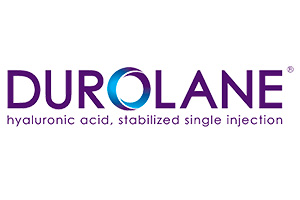
Osteoarthritis is a widespread disease that restricts people’s movements and lowers their normal pace of living. From all possible ways of treating it, hyaluronic acid injections are probably the most well-known ones. If your doctor in charge has recommended you consider HA therapy, knowing its details and specifics may be essential.
In this article, I am going to answer the most popular questions about hyaluronic acid injections, involving their newest types, risks, side effects, and everything essential to consider before taking them. How does it impact knee osteoarthritis? What to expect from the procedure? Let me answer these and other questions to you shortly and easily.

What Are Hyaluronan Injections? How Do They Work?
Hyaluronan injections are a well-known, yet innovative way of pain relief for patients with osteoarthritis. They are frequently used not only by elderly patients, but in professional sport therapy and joint post-traumatic recovery as well.
Hyaluronan injections are based on natural hyaluronic acid, the main ingredient of synovial fluid. It is a high viscosity substance found in all human joints which function is to keep your movements smooth and protect bones from crashing one another. In a normal condition, synovial fluid is constantly produced by our bodies.

However, in cases of osteoarthritis, specific kinds of traumas and extensively high loads on joints, it may stop appearing. Lack of synovial fluid may lead to movement restrictions, joint pain and even dysfunctionality. In early stages, healthcare providers advise patients to take chondroprotective supplements and perform therapeutic exercises to strengthen muscles and ligaments, but sometimes this is not enough.
In severe cases, hyaluronic injections come to help people. Unlike analgesics, they deal not with the symptoms of arthritis, but the cause of pain itself. Injected directly in the suffering joint, they stimulate natural production of synovial fluid and compensate for its loss, protecting joints and bones from further disruption.
As a result of hyaluronan injections therapy, patients report about significant pain relief and mobility restoration. Hyaluronic acid joint injections allow people to keep moving at a high pace and live an active life at any age, even after severe traumas and operations.
Indications for Use Of Hyaluronan Injections
So how do healthcare providers understand that a patient needs a hyaluronic acid injection? Every case is unique, as well as hyaluronan injections themselves. It means that you must contact a healthcare provider in your area, describe your case and medical history. It might help you to receive highly-qualified personal recommendations on your specific case.
Still, there are some popular types of diseases in which hyaluronan injections might be advised to patients:
- Rheumatoid arthritis is the most frequently seen issue. It is a common condition of joints for elderly patients or ones who experience high physical loads in their daily working practice. In such situations, hyaluronic acid injections may postpone and prevent immobility and make movements comfortable.
- Sport-related traumas are the next popular cause of hyaluronan injections intake. Gymnastics, dancing, acrobatics, weightlifting and other kinds of sports, including extreme ones, inevitably lead to changes of joint structures and involve a high risk of traumas.
- Domestic injuries are the next possible cause. People may damage their bones and joints even in completely normal situations. In case of serious problems, hyaluronan injections might be used to speed up the recovery process and return the joint to its normal condition as fast as possible.
- Operation recovery may require a course of hyaluronic acid injections as well. Their purpose there is to help body tissues with healing or implanting a prosthesis, if there was one. HA shots may relieve pain and make healing a bit lighter.

However, all these cases often require other healing methods. Depending on the type of problem and its severity, healthcare providers define whether a patient needs an injection, or chondroprotective pills, or therapeutic exercises. Patients often heed to combine a few methods to achieve the best positive effect and restore usual activity comfort without any surgical intervention.
However, there are some cases in which hyaluronan injections are not allowed:
- a blood clotting disorder (e.g. hemophilia);
- allergies and personal intolerance of some substances of the composition;
- an infection in the damaged joint or in the skin around it.
In such cases, healthcare providers may offer you other solutions or find a safe medicine without allergens.
How To Take HA Injections Right?
The main thing about most injections for osteoarthritis is their repetitiveness. To make their effect long and sustainable, a medical expert might make a shot of hyaluronic acid once in a period. There is no one defined scheme of intake for all existing hyaluronan injections, of course. Each case requires a certain number of shots.
Some medicals are taken as courses, such as popular visco knee injection Durolane requires from 3 to 5 shots made once in a week. As a result, it delivers pain relief and general improvement for 6 months.
On the other hand, there are medicines with higher HA concentration, and they are injected once in a longer period — a year or even more. This is, for example, Synvisc One, a HA injection knee with a high concentration of active substance and presented in a large dose. Your actual healthcare provider must provide you with detailed information about your healing course.

Knowing your correct treatment intake scheme, you should strictly follow recommendations from the professional. Usually they include aftercare care nuances. You should move carefully and lower the damaged joint’s activity for a few days after the injection, so the recovery goes smoothly.
The Process of Viscosupplementation Treatment for Arthritis Explained
Here is a detailed explanation of the hyaluronan injection process itself. Please note that only a certified healthcare provider might provide you this treatment. Use this description as an acknowledging material that introduces the procedure and all its stages.
- When you come to the doctor’s office, a trained medical professional will clean the injection site with an antiseptic.
- As the next step, you’ll receive an analgesic injection or spray to eliminate pain and discomfort during the process.
- If there is some excess fluid in the joint area, a healthcare provider will remove it.
- Next, you’ll receive an intra-articular injection, which means injecting hyaluronic acid solution right into your joint.
- After the injection is made, you will get a bandage to protect your joint during the healing process.
- For the next 48 you should avoid extensive physical activities such as standing and walking for a long time, doing exercises, or lifting heavy weights.

That’s it! Usually, you’ll need to repeat this procedure. A course of hyaluronic acid injections involves from 1 to 5 procedures with a week-long interval. You may expect your healthcare provider to suggest a therapy scheme similar to this one.
The Results of Arthritis Viscosupplementation Treatment
The effect of HA injections’ intake will appear soon after the course ends. You should wait for a couple of weeks so the changes become visible. After that time passes, you’ll experience pain relief and mobility improvements. This result will last for several months.
If the first procedure was suitable and brought improvements, a healthcare provider will suggest you to continue therapy with another course. In some cases, they will advise you to change the medicine for a stronger effect.

How to Prepare for Viscosupplementation Treatment for Arthritis?
The main rule before taking intra-articular injections for knee joints and others is not to take any other supplements before the procedure. While having a pre-procedure consultation with your doctor, mention all medicals that support your health on a daily basis. It involves all analgesics, herbal treatments, and dietary supplements, as well as medicals for your chronic diseases, etc.
There are no strict food restrictions, just keep eating according to your habits on the day of the procedure. However, your doctor in charge might advise you to avoid products that affect blood pressure (coffee, strong tea, and others). Ask a healthcare provider for certain instructions and follow them strictly.
Side Effects and Risks
Intra-articular arthritis treatments have quite a small range of side effects and risks, and they are studied well in the scientific community. The main after-effect you should be ready for is inflammation and pain at the injection site. It is normal for intra-articular invasions, lasts for a couple of days, and can be eliminated via an analgesic. However, top-specialists know vaccination techniques that make the process completely painless.
All other possible side effects and risks are always mentioned in the medication instruction. A doctor will additionally warn you about possible after-effects. However, if you are consulting with a certified and skilled professional, everything should go smoothly and bring you minimal discomfort.
Most patients with arthritis don’t experience anything else specific after the procedure. However, if you feel something unusual, or pain lasts longer than expected, you should notify your doctor in charge as soon as possible to escape consequences.
Effects on Other Treatments
Alcohol
You should avoid drinking alcohol the day before getting an HA injection because it might impact your blood pressure. Restricting it will help you with achieving a more predictable and controllable result.
However, doctors usually don’t ask patients to avoid alcohol after the procedure. You should know your limits and never go beyond your normal amount. In certain cases, healthcare specialists advise to reduce the dosage.
Pregnancy And Breastfeeding
There is no information about arthritis viscosupplements’ impact on the health of pregnant people and unborn babies, as well as their impact on breast milk. So if you become pregnant while having a course of injections, notify your doctor immediately. Also, it is advised not to breastfeed during HA therapy.Here is the main information you should know about viscosupplements before starting a therapy course. FREI is always ready to provide you with expert advice and guide you through different orthopedic treatment to make your healing process as comfortable as possible.


